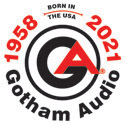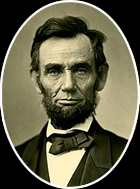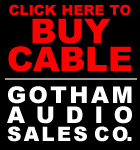1966
1966 began with a promise of unlimited new horizons. It was all about the music. In 1965, Beatlemania had kicked into high gear. The first US stadium concert at Shea Stadium ushered in a new era for live music events. "Rubber Soul" introduced us to a new depth of lyrical and musical material. Bob Dylan went electric at newport and Forest Hills. "Like a Rolling Stone" announced that folk-rock, electric blues and rock poetry were here to stay. Pop Music and culture would never be the same.
Forty years of extraordinary achievements in audio technology were now placed in service of an international cultural phenomenon of unprecedented proportions. The plethora of recent writings about the recording equipment used for those first eight UK Beatle LP's (1963-1967) amply document the contributions of the great Central European electronics manufacturers to the new era of popular music.
But I knew little about that technology at the time. I had been working at small radio stations since my junior year of high school but the tape recorders from Bell and Viking were a far cry from Ampex and Studer, and the EV mics certainly weren't in the same league with Neumann. My personal taping was done on a Lafayette Electronics Criterion open reel recorder with speakers, a T-shift transport control and a magic eye level meter. I was mostly a voracious listener to the new sounds, not a creator or participant.
The summer of 1966 found Jerry Graham (later to become Gotham Audio's eastern sales manager) and I stocking the shelves at the original SAM GOODY record store on West 49th Street in New York City. At that time it was the world's largest record store. Among our co-workers was Jim McCarthy, a founding member of The Godz (recording on ESP records along with The Fugs and Pearls Before Swine). Jim was likely Goody's first "long-haired" employee and was personally hired by Sam Goody himself to organize a British Invasion section in the 49th Street store.
After work, Greenwich Village beckoned us with an explosion of talent. The success of The Lovin' Spoonful at the Night Owl in 1965 brought both bands and crowds to the new folk-rock scene. That summer I spent seemingly endless evenings taking in The Paul Butterfield Band, The Blues Project, The Youngbloods and Richie Havens. In August, I was at Shea Stadium for the Beatles' 2nd concert there, a futile attempt to hear either the headliners or the opening act, New England favorites Barry and The Remains, over the roar of tens of thousands of hysterical teen-age girls.
Behind the scenes, audio technology blossomed in 1966. The Studer J37 four-track Recorders were tracking the complex sounds of "Revolver" for George Martin and Geoff Emerick. The first solid state Neve consoles went into production. Dolby A Noise Reduction was introduced and a new generation of eight-track tape recorders would soon make their way into American studios. 48 Volt Phantom Power and solid state electronics ushered in a new breed of microphones with FET amplifiers, including such enduring classics as the Neumann KM-84. Neumann introduced a Computer Controlled Disk Cutting Lathe and Studer shipped its first solid state stereo recorder, the amazingly compact, rack-mountable A62.
Amidst this creative and technical ferment, the German company EMT (renowned for its turntables and plate reverbs) began showing a newly designed audio cable featuring shielding made from multiple layers of hair-thin, closely spaced copper wire, helically wound in opposite directions. They called it a "Reusen Shield" (Note: somewhere along the line, many years later the common spelling of this in sales literature, for reasons unknown, changed to "Reussen" and the common description for EMT's single stage, two-layer shielding became "Double Reussen Shielding.")
The cables were introduced by various EMT distributors at audio shows in 1966. The English publications Gramophone noted: "One of the problems in running long cables connecting parts of an audio system is the risk of picking up interference from a local transmitter. Ordinary television coaxial cable gives very little effective shielding from this form of interference, but a new range of cables is made by EMT and distributed by F.W.O. Bauch, who also handle Neumann condenser microphones. These special audio cables have a double layer Reusen-shield which gives effective screening up to several Megacycles."
This design graced the classic Neumann-branded mic cables which appeared in 1968 and it formed the basis for the Gotham-branded line of cables, several of which have been in continuous production since the mid-1970’s.
In fact, Double Reussen Shielding demonstrated effective protection against high frequency interference up to 50 MHz, some 100 times the frequency that could be reached with a normal wire braid shielding. As EMT advertised a decade later: The end result of this construction was a cable that offered “maximum shielding efficiency in the RF range which simultaneously results in shielding properties at low frequencies far superior to those of the old common braid or foil type shield.”
It was over 55 years ago, but the music from that magic year and the equipment that helped create it have left a permanent mark on both our popular culture and audio technology. Many of the products are now vintage classics, prized by engineers, audio enthusiasts and collectors. A handful are still in production. Gotham Audio cables, many based on the original EMT concepts from 1966, remain the cable of choice for the world’s finest microphones. In 2014, Gotham took those EMT concepts one step further with the UltraPro range of cables featuring Multi-Stage Reussen Shielding. The ultimate Gotham cables for high-end audiophile and recording applications.
In January 1985, I began my association with Gotham Audio, joining the family of Neumann franchised microphone dealers.I am retiring Gotham Audio (USA) in 2022. It has been a great honor to have had a share in the heritage and legacy of the great audio electronics companies of Central Europe such as Neumann, EMT, AKG, Telefunken, Studer, Beyer, Klein & Hummel and Microtech Gefell. These brands were at one time or another distributed by Gotham Audio, founded by Stephen Temmer, in New York City. All of them were instrumental in the creation of legendary analog recordings.
Lewis Frisch
GOTHAM AUDIO USA
Nazareth, PA USA
(610) 746-9342
www.gothamaudiousa.com
gothamaudio@earthlink.net





